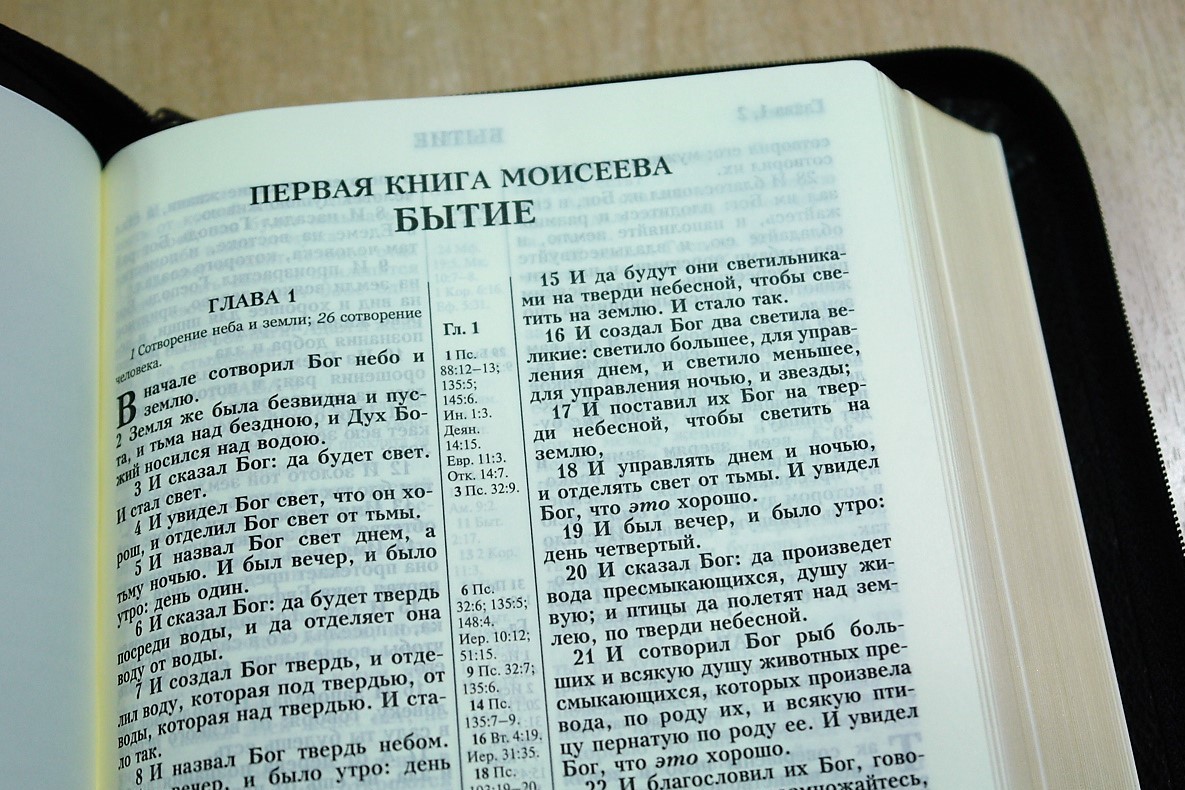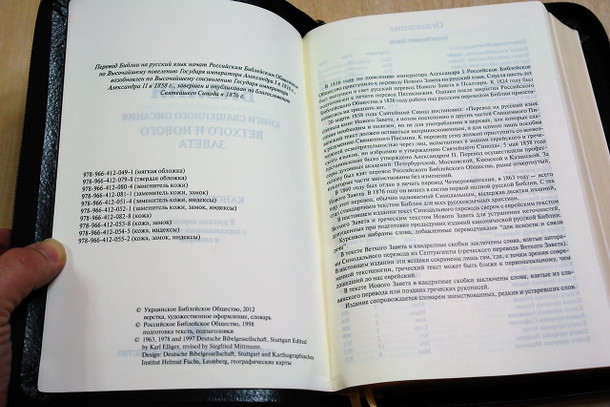Description
Russian Synodal Bible Русская Библия Синодальный перевод | Black Luxury Leather Cover with Golden Edges and Zipper
Product Details
- UPC: 9789664120538
- Translator: Russian Synodal Translation
- Genre: Religious Text
- Number of pages: 1270
- Publisher: Ukrainian Bible Society
- Release date: 2013
Product Specifications
- Format: Hardcover
- Language: Russian
- Dimensions: 25cm x 17.5cm x 2.5cm (9.8in x 6.9in x 0.8in)
- Weight: 990g (2.2lbs)
Overview
The Russian Synodal Bible with a black luxury leather cover is an exquisite and durable edition of the Russian Synodal Translation, commonly used by the Russian Orthodox Church, Russian Baptists, and other Protestant and Roman Catholic communities in Russia. This Bible features golden edges and a zipper, making it both elegant and practical.
The Russian Synodal Translation began in 1813 after the establishment of the Russian Bible Society and with the permission of Czar Alexander I. The complete New Testament was published in 1820, and the Old Testament translation was resumed and completed during the reign of Alexander II. This luxurious edition of the Russian Synodal Bible is perfect for personal devotion, study, or as a thoughtful gift for loved ones.
Interesting Facts
- The Russian Synodal Translation is a non-Church Slavonic translation of the Bible commonly used by various Christian communities in Russia.
- The translation work was halted in 1825 due to conservative concerns under Emperor Nicholas I but was later resumed and completed during the reign of Alexander II.
- This luxurious edition of the Russian Synodal Bible features a black leather cover, golden edges, and a zipper, making it both sophisticated and functional.
Обзор
Русская Синодальная Библия в роскошном черном кожаном переплете представляет собой изысканное и долговечное издание Русского Синодального перевода, широко используемое Русской Православной Церковью, русскими баптистами и другими протестантскими и римско-католическими общинами в России. Эта Библия имеет золотые края и застежку-молнию, что делает ее элегантной и практичной.
Русский синодальный перевод начался в 1813 году после основания Русского библейского общества и с разрешения царя Александра I. Полный Новый Завет был опубликован в 1820 году, а перевод Ветхого Завета был возобновлен и завершен во время правления Александра II. Это роскошное издание Русской Синодальной Библии идеально подходит для личного пользования, изучения или в качестве продуманного подарка близким.
Интересные факты
Русский Синодальный перевод — это нецерковнославянский перевод Библии, широко используемый различными христианскими общинами в России.
Работа по переводу была остановлена в 1825 году из-за консервативных опасений при императоре Николае I, но позже была возобновлена и завершена во время правления Александра II.
Это роскошное издание Русской Синодальной Библии имеет черную кожаную обложку, золотые края и застежку-молнию, что делает его изысканным и функциональным.
The Russian Synodal Bible (Russian: Синодальный перевод, The Synodal Translation) is a Russian non-Church Slavonic translation of the Bible commonly used by the Russian Orthodox Church, Russian Baptists and other Protestant, as well as Roman Catholic communities in Russia.
The translation began in 1813, after the establishment of the Russian Bible Society and by permission of Czar Alexander I. The complete New Testament was published in 1820 and the Old Testament was already translated up to the book of Ruth when work on the project was halted in 1825(?). In that year the Russian Bible Society was disbanded and its translation work discontinued under a more conservative emperor Nicholas I (between 1825 and 1855) due to its suspected seditious influence on the Russian population. It was again resumed and completed in the next reign, of Alexander II.
The Most Holy Synod entrusted the completion of the translation to four Orthodox theological academies, in Moscow, Saint Petersburg, Kazan and Kiev. The complete Bible was published in 1876 and included the 1820s translation of the New Testament with very few changes, as well as the Old Testament, whose translation reflected the work done both before and after the period of reaction. The final editorship was performed by Filaret, Metropolitan of Moscow.
The translation of the Old Testament is based on the Jewish Masoretic Text, while that of the New Testament is based on the Greek printed editions of that time.[2] This decision was grounded on Filaret's 1834 note "On the need of the Russian Church for a translation of the whole Bible from the original texts to the modern Russian language" and reflected the growing acceptance in the Russian theological community of the contemporary Western standards of Biblical scholarship of the time.
Official permission to use the Masoretic Text as preserved by the Jews (rather than relying on the Septuagint and/or the Church Slavonic translations as preserved by the Christians) was granted to Filaret by the Synod in 1862, even though technically the translation was already mostly completed by that time.
In the 1870s, when the complete Russian Bible was being finalized, the linguistic norms of the Russian language had already changed when compared to those of the early 19th century, when most of the translation work was completed. Nevertheless, the translations that were done earlier remained largely unchanged, due mostly to the considerably smaller scale of the entire translation project compared to what was done by the Russian Bible Society before it was closed in the 1820s.
Also, due to its strong vocabulary and stylistic reliance on the more-than-1000-year-old Church Slavonic translation—a translation that in fact was done not into the Russian language of the time, but into a language spoken by the Southern Slavs—the Synodal version remains a linguistic phenomenon of its own kind that helped to shape some distinctive Slavonic-inspired features used both in the Russian spoken language and in Russian literature to this day.




















































